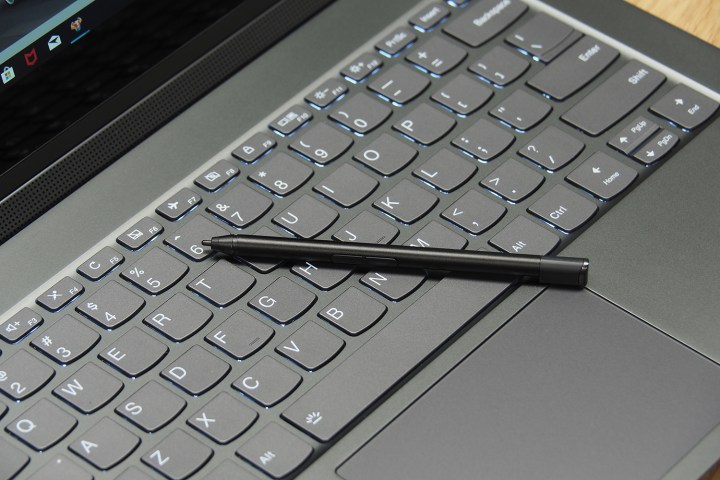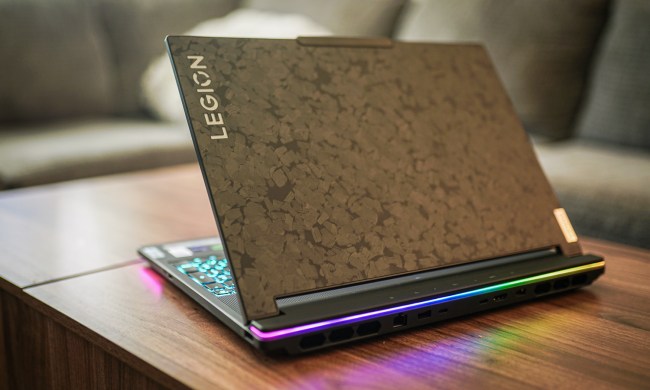

Lenovo’s premium Yoga laptops are traditionally known for their convertible designs and thin and light form factor, making these Ultrabooks a great option for those who prize a light notebook for its mobility.
Even though many of the refreshed Yoga models share the same overall design as their predecessors from last year, Lenovo unveiled significant changes to these thin laptops at the Berlin-based IFA trade show, and the improvements will definitely appeal to gamers. In addition to getting updated processor options from Intel, some of these notebooks now also come with discrete graphics from Nvidia, making them more suited for quick creative work and gaming while you’re away from a beefier desktop.
Yoga C940

Sporting the same convertible hinge design and integrated Dolby Atmos-tuned soundbar as last generation’s Yoga C930, this year’s C940 features Intel’s updated 10th-Gen Core mobile processors for long battery life — up to 17.5 hours on configurations with an FHD display — and stellar performance. With an aluminum construction, integrated privacy shutter over the webcam, and slim bezels, this laptop is now better adept at handling productivity tasks, as well as creative projects and gaming.
With up to a 10th-Gen Core i7 or 9th-Gen Core i9 processor and up to Nvidia GeForce GTX 1650 discrete graphics alongside up to 16GB DDR4 memory and up to 1TB of solid-state storage, the Yoga C940 delivers better performance than prior models. It’s unclear at this time if the C940 will be available in a configuration with Intel’s six-core Comet Lake Core i7 processor.
The C940 is available with either a 14- or 15.6-inch display, and you can configure it with up to 4K UHD resolution with VESA DisplayHDR support and 500 nits of maximum brightness. The higher-resolution screen draws more power, and battery life is rated at around nine hours with the UHD display. The smaller 14-inch model tops out with integrated Intel UHD 960 graphics, so you’ll want the larger model for gaming and GPU-heavy tasks.

The smaller model measures 12.62 x 8.47 x 0.56 inches and has a weight of just under 3 pounds, while the larger model comes in at 13.1 x 9.39 x 0.69 inches and has a starting weight of just over 4 pounds. Typical of consumer notebooks, ports are more limited, though you will find two Thunderbolt 3 over USB-C ports alongside a traditional USB-A 3.1 port.
As a convertible, this laptop supports both touchscreen and inking, with a dedicated pen garage to stow the stylus when it’s not in use.
Yoga C740 and C630

If you don’t need all the bells and whistles of the flagship Yoga C940, the midrange C740 and C630 deliver a solid computing experience at a more affordable price point. Like the flagship C940, these laptops have been upgraded to 10th-Gen Intel Core i7 processors and options for 14- or 15.6-inch screen sizes, though you won’t find discrete graphics on these Yoga models.
Another difference is that these laptops use a more traditional 360-degree convertible hinge to transform into tablet mode, so you don’t get the integrated soundbar in this design. Dolby Atmos speakers are still present on these models, however, along with a privacy shutter for the webcam, fingerprint login, and optional digital pen without Bluetooth support. The C740 makes use of an all-metal design and can be configured with Wi-Fi 6. Screen resolution tops out with FHD on both models.
Designed for on-the-go computing, the C640 also adds in optional 4G LTE mobile broadband modems for when you’re away from your Wi-Fi 6 access point. It features 13.3-inch FHD touchscreen with 10th-Gen Intel Core i7 processors and integrated Intel HD 620 graphics.
Made for Yoga lovers who don’t love yoga

If you like Lenovo’s Yoga lineup but don’t want a complicated 360-degree Yoga-style hinge design, the Yoga S740 is made for a pure laptop experience with a design that’s similar to the convertible C740 line. It’s not as premium as the Yoga S940 that was introduced earlier this year, so you won’t find the same super-slim bezels, but like the C940 and C740, this laptop comes with options for 14- and 15.6-inch displays with up to 4K UHD resolution and supports the same VESA400 HDR IPS panel at 500 nits as the C940.
It’s also been upgraded to up to Intel’s 10th-Gen Core i7 processor and comes with options for discrete graphics. The smaller model features Intel’s GeForce MX250 graphics, while the larger 15.6-inch S740 comes with GeForce GTX 1060 graphics.
Battery life is rated for up to 14 hours for the FHD model and up to 10 hours for UHD. Featuring an all metal design, Wi-Fi 6 connectivity, and a starting weight of 3.1 pounds on the 14-inch configuration or 4.2 pounds on the larger model, this non-convertible Yoga boasts a slim profile and modern ports, including Thunderbolt 3 over USB-C and USB-A, and the larger model even comes with a memory card reader.
Pricing and availability for these new Yoga models were not immediately available. For comparison, the Yoga C930 starts at around $1,200.


